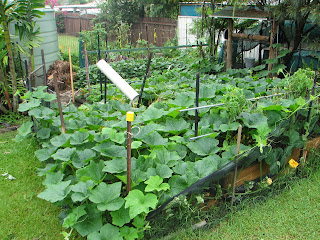What is the ideal size of a veggie garden? The question seems to be a fairly frequent question among people who are planning to start this activity for the first time. Although there is no right or wrong method to the determination of the size of your garden, the general answer is to start small.
To begin with, it is probably a good idea to understand what you want to plant, how much you want to plant, and where you want to plant before you do anything. The size of the veggie garden can also depend on the availability of space and the way in which the land is suitable for cultivation.
Find the ideal size of the vegetable garden that will suit you the best.
As there are many vegetables that are also considered as an ornamental plant in appearance, it is not necessary to hide the view. In fact, almost all vegetables can be grown in your own beds and in containers.
While you want your veggie garden to be large enough to meet your basic needs, you do not need to make it to not big and it becomes too demanding. Most people do not have time to deal properly with all maintenance and attention to a great veggie garden requires. As the proverb says, the temptation is the root of all evil, therefore, use only what you really need to use. Resist the urge to plant crops in mass, you'll regret it later, with back-breaking maintenance, such as weeding, irrigation and harvesting. For example, if you want only tomato and cucumbers, try to incorporate these plants in containers.
There are many varieties to choose from, cucumbers and cherry tomatoes, for example, not only they will grow well in containers, but may appear quite correct as an ornamental plant. Put your cucumbers and your tomato plants in containers will reduce unnecessary work.
An alternative approach could include the use of small raised beds. You can start with one or two beds of vegetables selected. Then, when time allows and experience, you can add another bed or two. For example, you could choose to have a bed entirely for your tomatoes and other for your cucumbers. The following year, you may want to try your luck with the squash or beans. By adding more beds, or in containers, this expansion can be achieved easily.
If you plan accordingly, your veggie garden, it will require less maintenance and this will result in greater productivity. Finally, for your veggie garden, the size will depend on your individual needs. Everything is possible, do not be afraid to experiment. Once you have found a manageable size and an organization that works for you, stick to them. Over time, you'll find that you get better yields and better vegetables!
If you want to know more about gardening, you can visit this website : veggiegardenplans.com

